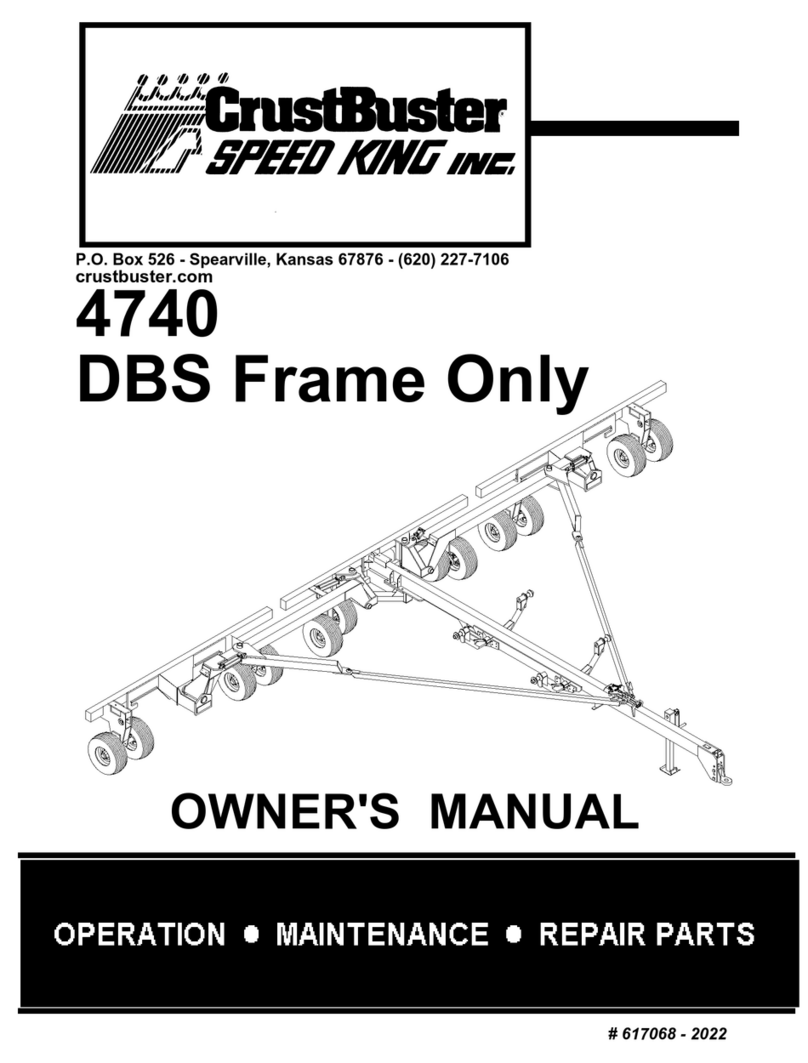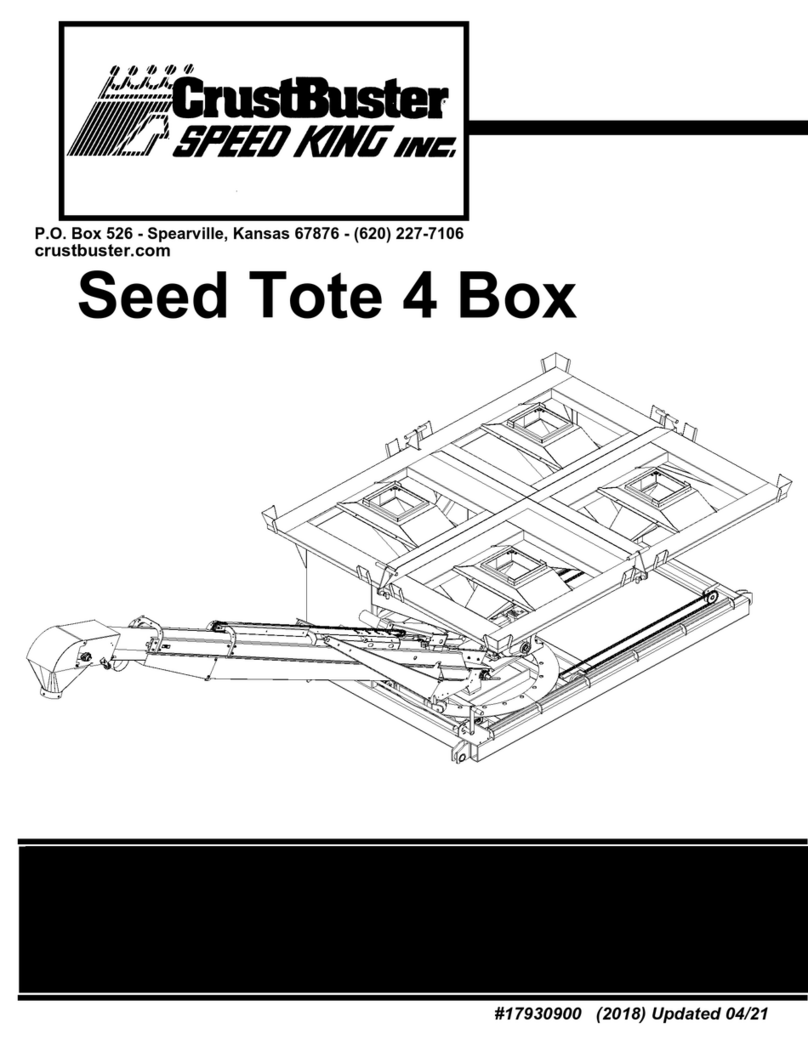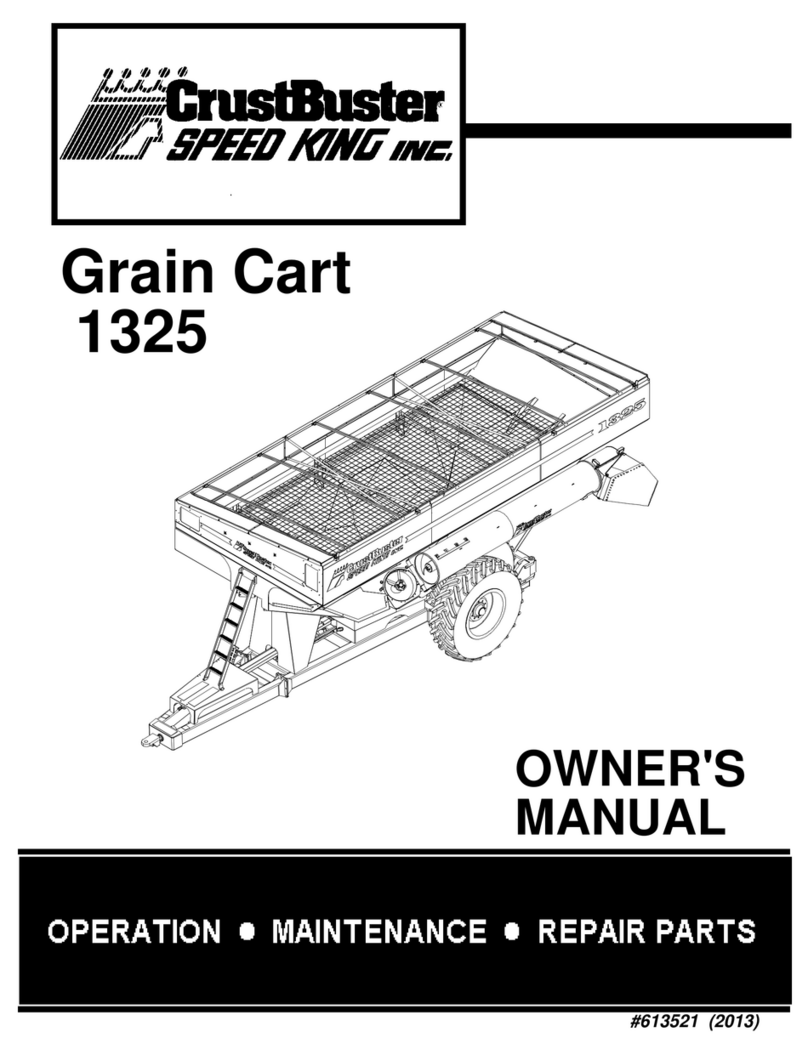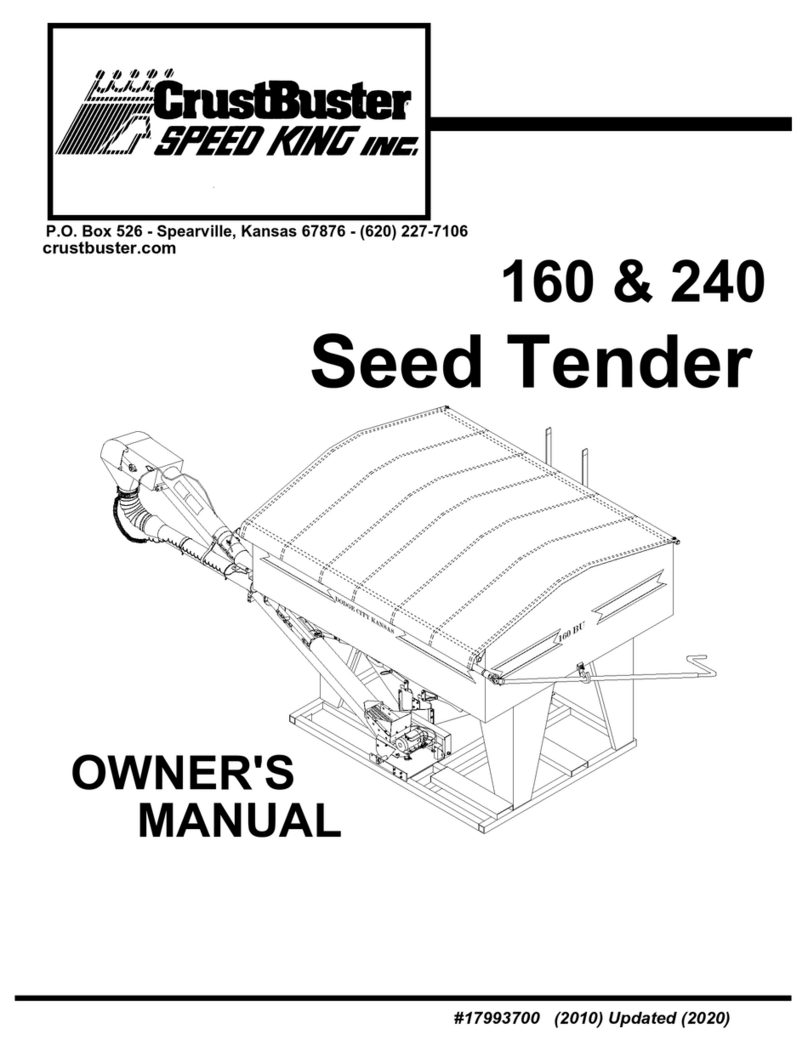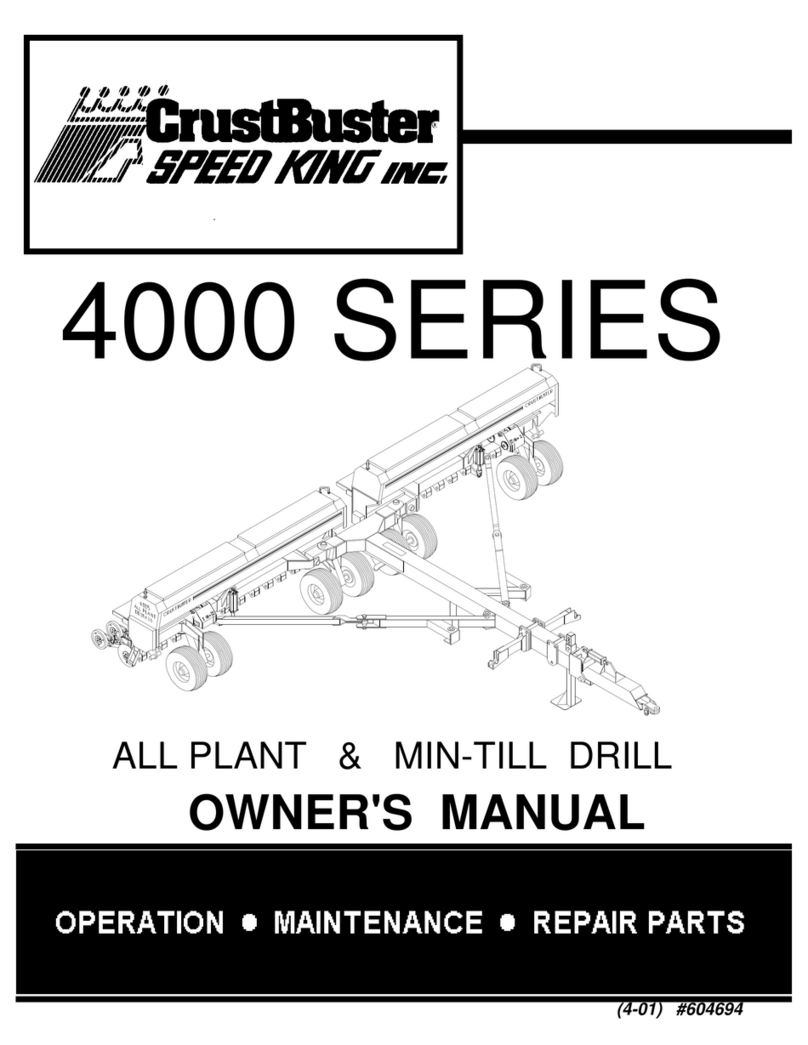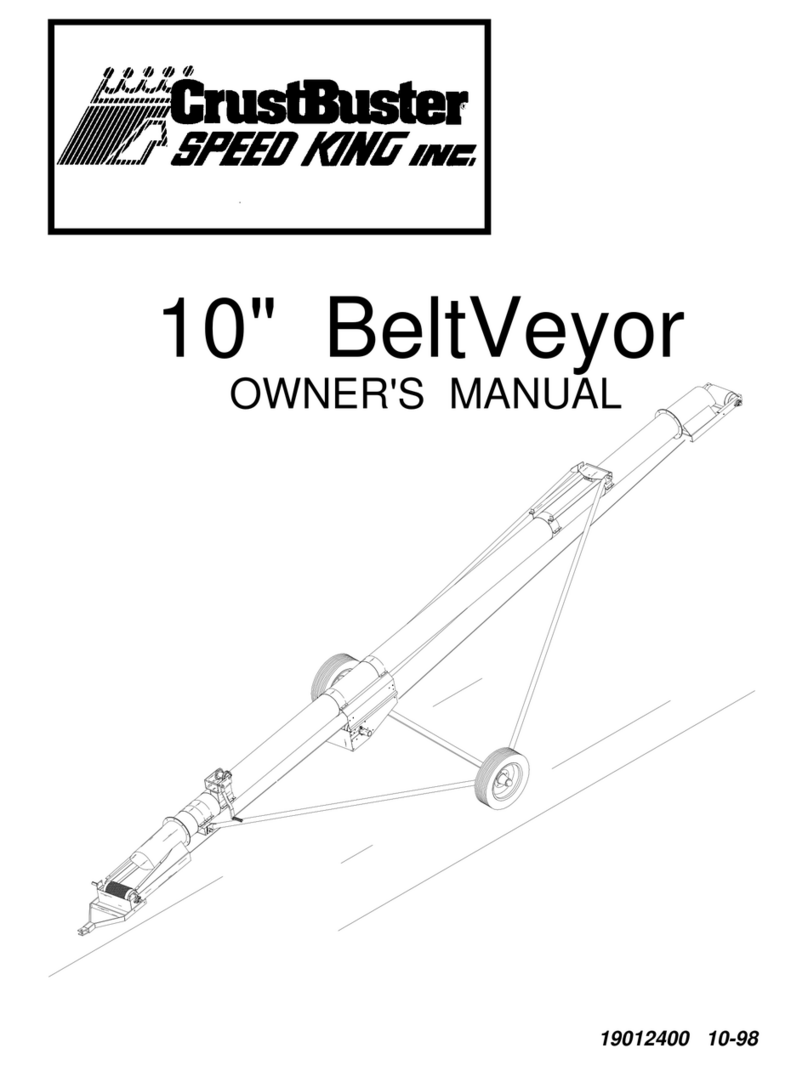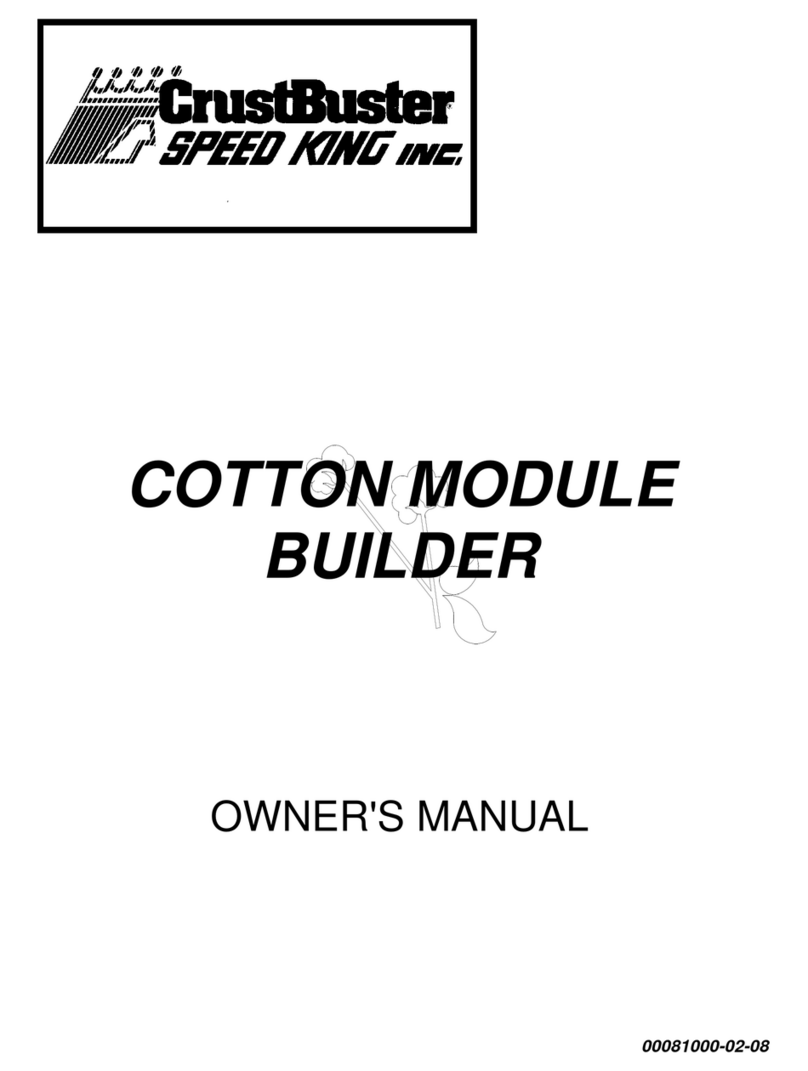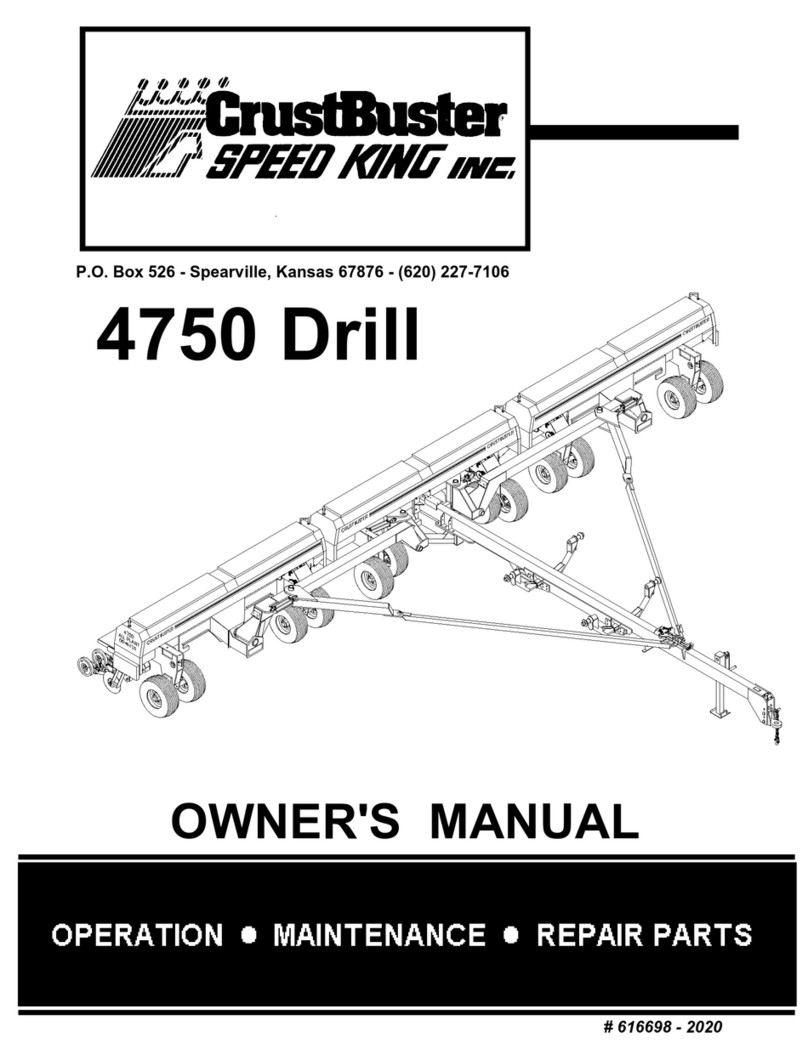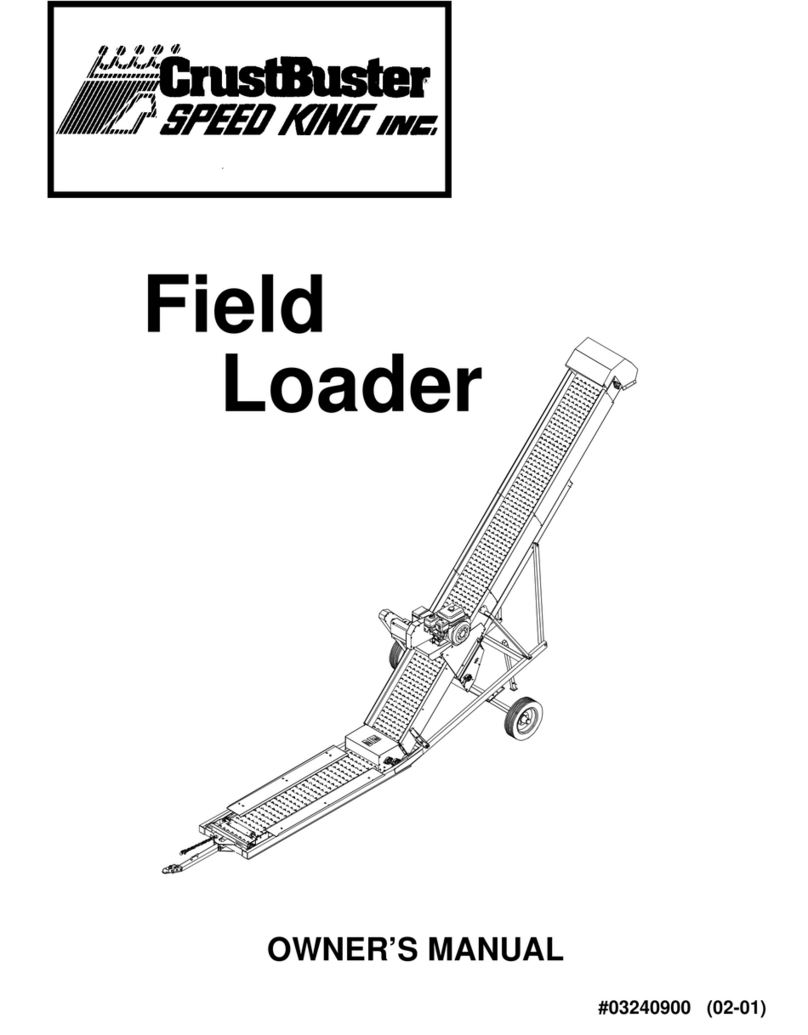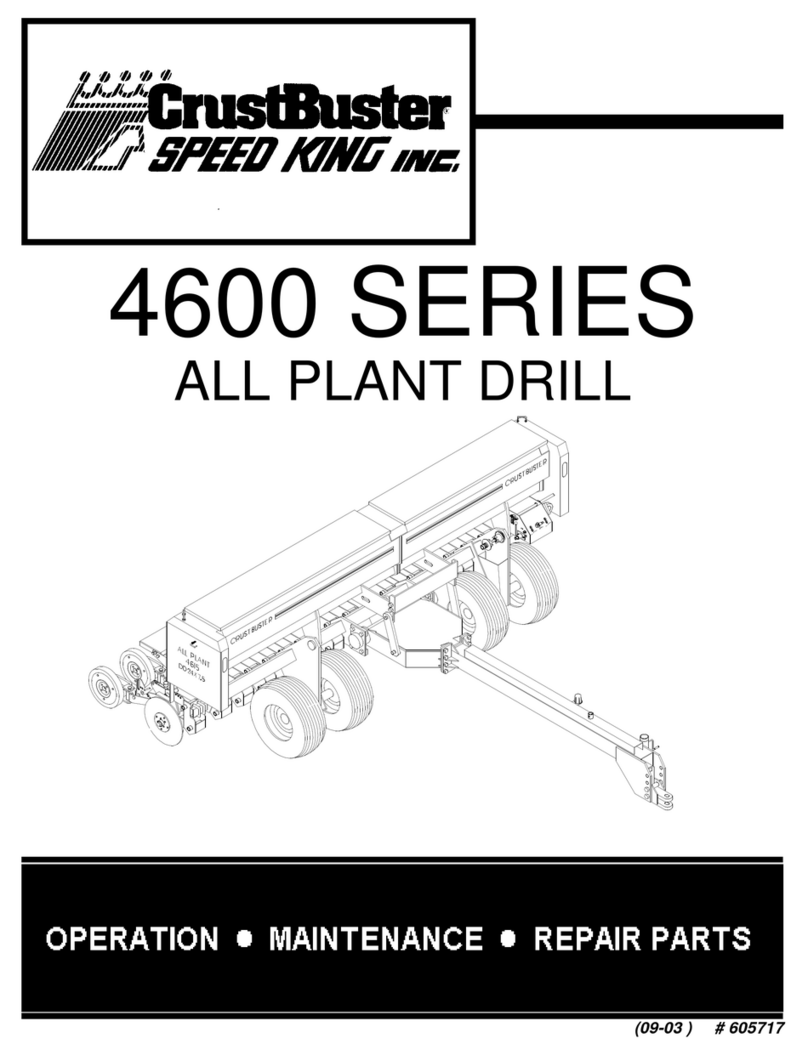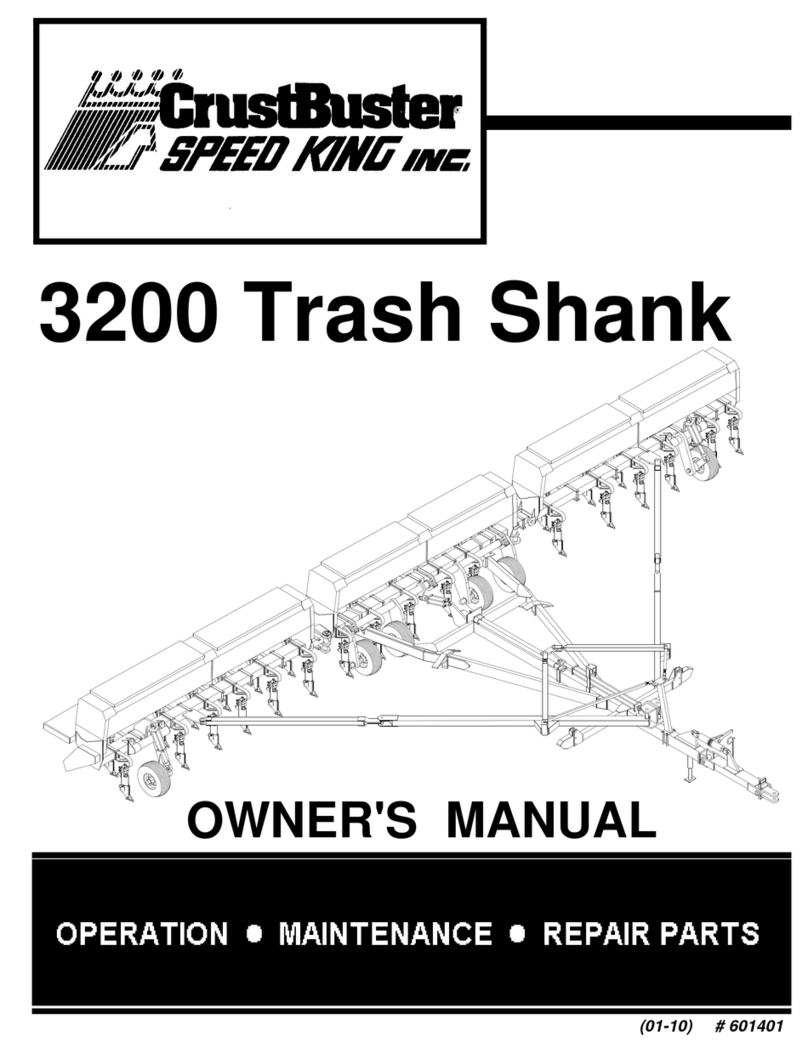
Operation
5. Retract cylinders to fully closed position and
reconnect cylinder rod to basket using cylinder
pin.
6. Repeat above procedure for packer panel,
swing tongue and chain dump unload panel
cylinders; except it is not necessary to
disconnect cylinders during purging procedure.
7. After cycling all cylinders and purging lines and
cylinders of any air locks, check to be certain all
cylinder pins are securely held in place and will
not work out under load.
8. You are now ready to dry run the unit.
Complete the lubrication of the unit as described
on page 8. Read the operating section of this
manual before dry running of unit.
CAUTION:
While cycling the basket for the first time it is best
to have an observer on the ground at a safe
distance to give instructions to the operator. The
observer will be looking for any hydraulic hose
pinch points, loose connections, any binding of
basket or packer panel, or anything else that would
prohibit the safe and successful operation of the
unit. Be sure to observe the hoses at the main
pivot point in the upper corner for sufficient slack.
Weights For Stability
Tip Over Hazard
Many things affect the stability of the Boll Buggy.
The addition of the Big Lip, regulator, and chain
door make the Boll Buggy more unstable. Wider
wheel spacing will increase stability.
With the dump-out side wheel set to the narrowest
position, it may take 2500 pounds of weight added
to the dump-in side.
Three weight racks are attached to the Boll Buggy
on the dump-in side. These racks will accept
tractor weights made to mount on a ½" x 6" bar. In
addition to steel weights, liquid ballast can be
added to the dump-in side tire. (Approximately
600#)
The requirement for added weight will decrease as
the dump-out wheel is adjusted out. In the middle
position approximately 1700 pounds will be
needed. At the widest wheel setting the weight
requirements decrease to approximately 600#.
Operating Information
Before operating this unit, refer to the Lubrication
section in this manual on page 8 and make sure
machine is properly lubricated.
The Boll Buggy is designed with a unique packer
panel allowing the basket to hold two dumps from
most cotton pickers and strippers as well as the
ability to dump the two dumps separately. This
means the Boll Buggy can dump without overfilling
the module builder.
To receive load from harvesting unit, extend
packer panel cylinders so top end of packer panel
is against the right side or dump-in side of basket.
Position Boll Buggy along the side of harvester,
close enough to allow transfer of cotton from
harvester to Boll Buggy.
After the harvester has dumped into the Boll
Buggy, the packer panel cylinders may be
retracted as far as possible, thus compacting and
moving the cotton to the left side of the basket.
NOTE:
A relief valve has been placed in the
circuit as a safety precaution so high pressures
cannot be built up during the pack cycle.
At this time, the Boll Buggy is ready to receive the
second dump from the harvesting unit. After
receiving the second dump, the Boll Buggy packer
cylinders should again be extended enough to
release compaction force on first dump and at the
same time compact and hold second dump.
CAUTION: When turning or crossing
rough terrain, slow tractor speed down.
CAUTION: Be sure everyone is clear of
the machine before starting engine or
operation.
To dump the Boll Buggy, simply drive along side of
trailer or module and stop at the required position.
Set tractor engine RPM at approximately 1/2 to 3/4
maximum engine RPM. Actuate tractor valve lever
to raise basket.
CAUTION: Use the following cautions
when dumping the Boll Buggy basket:
1. Use caution when operating around power
lines.
2. Watch for overload obstructions which might
interfere with the basket.
5




















